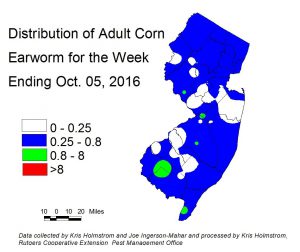Sweet Corn
Cold temperatures are slowing corn growth considerably. The same weather is also delaying the onset of pests like the European corn borer (ECB). No ECB were captured in blacklight traps this week. As the population develops, look for maps to be published in the weekly IPM Update.
Cole Crops
Although cold weather and heavy rains have suppressed them, IPM personnel continue to observe infestations of crucifer flea beetle. These beetles can build to high populations quickly, especially where wild mustard and related cruciferous weeds are common. Extreme feeding on small transplants can cause irreversible damage if not controlled promptly. [Read more…]


